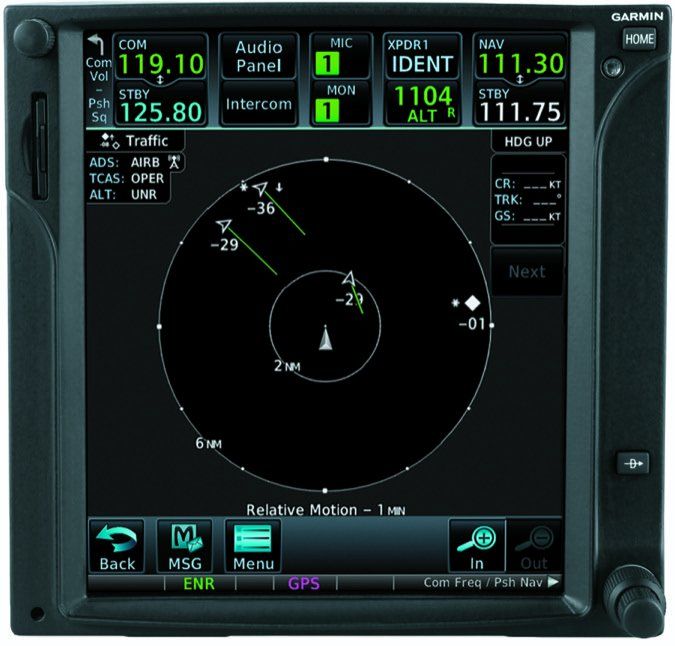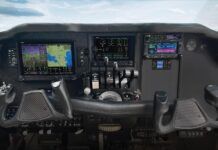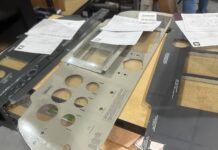Selecting a traffic alerter used to be easy. For lesser budgets, there were toss-it-on-the-glareshield portables (remember the Monroy?), while big-league active systems like the Goodrich Skywatch TAS were for serious collision avoidance. The buying decision was muddied when Mode S datalink transponders came on the scene, and of course now there’s FIS-B through ADS-B.
If you still haven’t upgraded to ADS-B, but your aircraft has an existing traffic alerter (TAS or TIS-A) you could be faced with some confusing buying and interfacing decisions should you include ADS-B traffic in the mix. With a multitude of traffic sources, how might you logically display them so interpreting the data doesn’t cause confusion and worse, a midair?
In this article we’ll attempt to answer some of these questions, plus we’ll look at the latest modern TAS products and compare the investment to ADS-B.
Traffic Tech 101
Before even talking with your shop about a traffic system retrofit (including ADS-B) you need to wrap your head around the various technologies and their limitations. Based on the correspondence we get and in talking with other pilots, traffic systems are more common now than ever (mainly because of portable ADS-B), but not everyone understands precisely how their setup works. By clearing up the confusion, you can better interpret the data and even help ATC when they issue traffic advisories. For starters, correctly state the system you’re using to avoid the confusion.
On a recent trip from Fort Lauderdale to Sarasota, Florida, we heard ATC giving another aircraft a traffic advisory, something like: “Traffic 12 o’clock at 6500 feet moving southeast.” The pilot responded “No joy, but I see him on the fish finder, I’m going to turn left.” We get the slang, but fish finders are for boats, not aircraft. Plus, the AIM says TAS and TCAS I are only to be used as a visual aid, not avoidance.
Traffic systems come in several flavors: They can be permanently mounted or portable, and they can be passive or active. By active we mean that the system is actively interrogating other transponder-equipped aircraft, like TAS and TCAS do. Let’s look at the various technologies available for upgrade, and for those searching the used market, we’ll start with old-school TIS-A datalink radar.
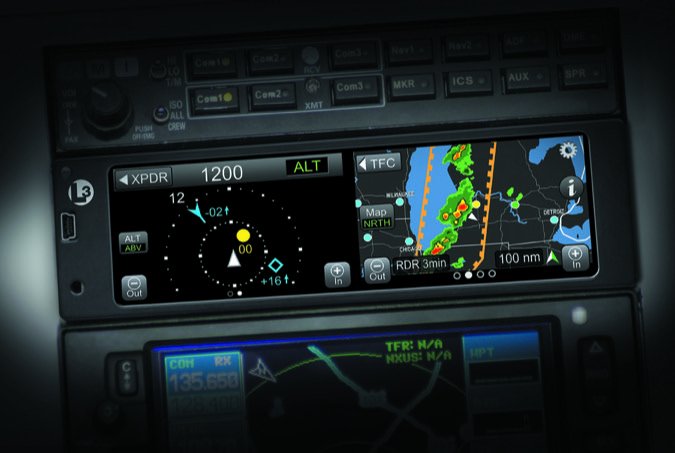
TIS-A is an older ground-based system that relies on the Mode S radar system (secondary radar surveillance) and is found in some approach control airspace. Availability of TIS-A services can be found in the AIM figure 4-5-5, reflecting areas of the greatest traffic densities and leaving most of the country without TIS-A services. Threat traffic must have a Mode A, C or S transponder and the ownship needs a Mode S transponder and appropriate display. Traffic information is captured during a single radar sweep and then it is uplinked to Mode S transponders during the following sweep, which results in an approximate five-second delay before it shows up as a target on the display. The maximum number of traffic targets is limited to eight and if there are more, the most significant threat aircraft are uplinked.
One of the more popular TIS transponders was the Garmin GTX330-Garmin sold this unit in huge numbers and it was commonly paired with the GNS-series navigators. With buyers stepping up to ADS-B systems, there are plenty on the used market, but we wouldn’t invest in one given the fading TIS-A infrastructure.
Like many who invested in TIS-A transponders, you might think you don’t need an ADS-B In traffic interface. Maybe you’re playing the data on a Garmin GNS430 or 530, or even on a new Garmin GTN or Avidyne navigator. TIS-A will still work with some approach control facilities that have older approach radars (ASR-7 and -8 radar), but these radars are being replaced by ASR-11 systems, which do not support TIS-A. This means that as the older radars are replaced, TIS-A will be available in even less airspace and eventually become extinct. When TIS-A is available, it is usually within 60 miles of approach radars.
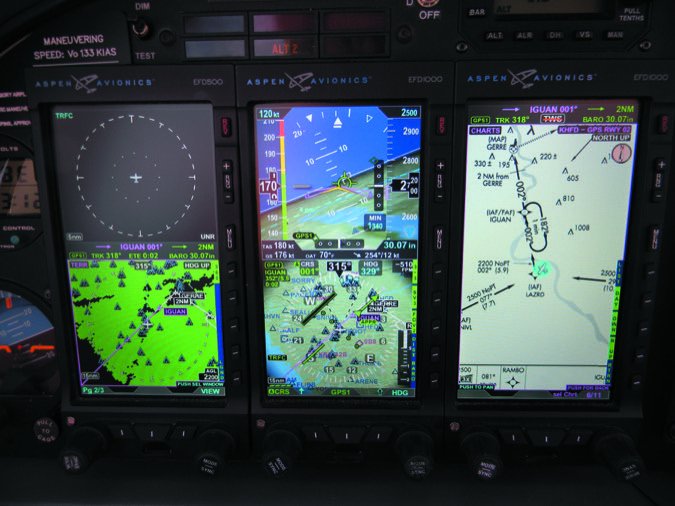
Another misunderstood traffic system is TCAS II, often confused with TAS. You’ll find TCAS II systems in transport and mightier GA aircraft (it’s expensive). It’s an active system with transmitter and receiver to interrogate nearby transponder-equipped aircraft and provides position, altitude and directional movement. TCAS II usually provides alerts aurally and on the display of aircraft that pose potential collision situations; some bare-bones systems only have aural alerting, but that’s rare these days.
What distinguishes TCAS II from the older TCAS I is that it provides RA (resolution advisory) such as “descend” and “climb.” Additionally, any TCAS-issued RAs that are received are to be followed over any ATC instructions. Furthermore, if both aircraft are equipped with TCAS II, they will coordinate with each other; for example telling one aircraft to climb and the other one to descend. For this system to work, aircraft must have either a Mode C or Mode S transponder.
TAS With Built-In ADS-B
TAS was born from TCAS and grew to be the most common active traffic system found in light general aviation aircraft because of its price compared to TCAS II. Like TCAS II, TAS consists of a transmitter and receiver that are panel mounted (the L3 NGT9000 is the only TAS system that’s panel mounted) or mounted remotely.
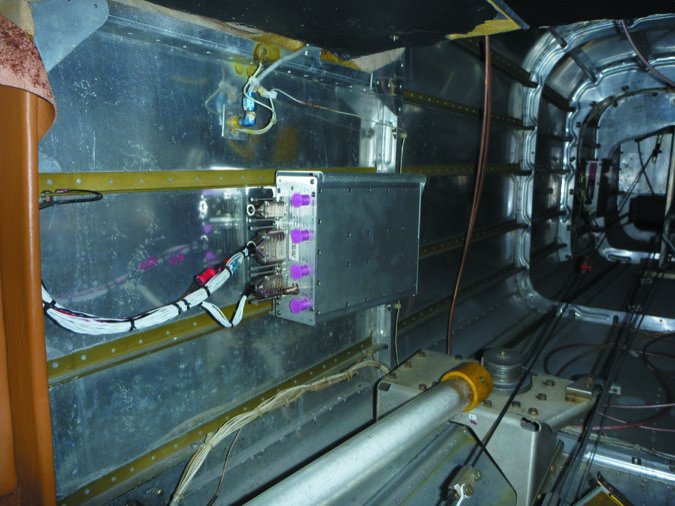
Unlike TCAS II, TAS does not provide resolution commands to climb, descend or turn to avoid the traffic. It simply flashes an onscreen traffic message, provides voice annunciation through the aircraft’s audio system and displays targets using TCAS-like symbology. TAS is not dependent on any ground facilities and all it needs is the line-of-sight of potential traffic. It will display Mode A, C and S transponder-equipped aircraft and, except for Mode A, TAS will indicate the altitude difference between the ownship and the traffic. It will also indicate if the traffic is climbing or descending in relation to the ownship.
Garmin has been offering the GTS800 TAS for a while and the standard version has 40 watts of transmit power. The jet-category GTS825 has 400 watts, as does the GTS855, which is a full-up TCAS I system.
In addition to active interrogation, the GTS800 has a built-in ADS-B In receiver to receive traffic transmitting on 1090 MHz extended squitter. There’s no 978 MHz UAT receiver, so the system won’t receive FIS-B weather and it doesn’t have ADS-B Out. The GTS800 displays ADS-B targets as ADS-B symbols only on the TXi displays and GTN navigators.
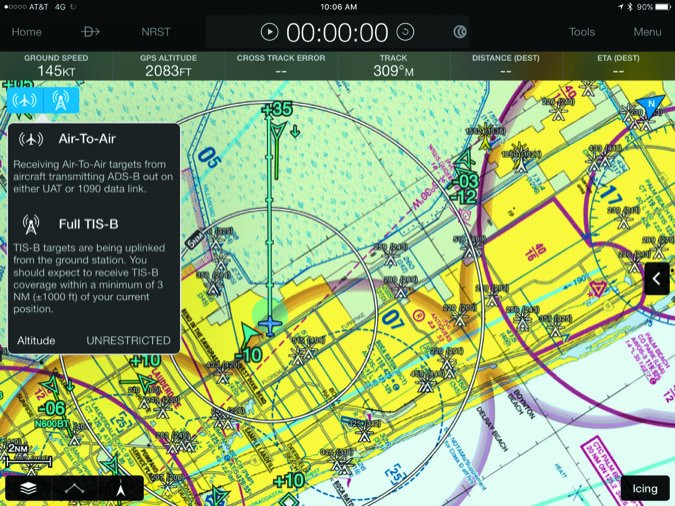
A top-mounted directional antenna is used to derive the bearing of intruder aircraft, while an optional bottom omnidirectional antenna helps eliminate shadowing issues. Of course these antennas are used in the interrogation process, so you might expect sizable reconfiguration of other antennas to accommodate a sound installation. Additionally, the ADS-B In function requires GPS and magnetic heading inputs.
The base GTS800 with a single antenna is $10,000, while the version with dual GA58 antennas is $11,080.
Avidyne recently certified its long-proven TAS600 processor with an ADS-B In receiver and calls it the SkyTrax 600. Like the Garmin system, the SkyTrax correlates all of the received traffic data (TAS and 1090 MHz ADS-B In, including ADS-R ground station rebroadcast). The SkyTrax 600 has a starting price of $9999 with dual (top and bottom) directional antennas. Like the original TAS600, there are four versions of the SkyTrax system, with display ranges starting at 7 miles for ADS-B and TAS targets and on the high end, up to 21 miles for TAS targets and 40 miles for ADS-B targets. Which system you choose will depend on the service ceiling and speed of the aircraft.
The L3 NGT9000 ADS-B transponder is available in a version that has a built-in TAS processor. It’s priced north of $10,000 with dual antennas. See the May 2017 Aviation Consumer for a full review of the NGT9000. We’ll look more closely at these latest TAS systems in an upcoming dedicated comparison article.
Unless you’re starting from scratch, you could be faced with interfacing more than one traffic system with a suite of new displays, while also deciding which system to part with and how to play the data on multiple screens. These are some of the decisions I recently made when upgrading the avionics in my Mooney Ovation, which included Garmin’s new G500 TXi primary flight display. That’s my upgraded panel pictured here. Based around the busy southern Florida airspace, a reliable traffic suite is important to me, so this might be overkill for your airplane, or not.
I had a new Garmin Mode S extended squitter (ES) transponder (Garmin GTX345) installed to replace an older Mode S transponder (GTX330ES). Before the installation, I was already ADS-B Out compliant. The new GTX345 provides ADS-B Out through the extended squitter exactly like the GTX330ES did, so not much changed in the ADS-B Out interface. But unlike the GTX330ES transponder, the GTX345 has an ADS-B In receiver on both frequencies: 1090 MHz, which is the standard transponder frequency, and the ADS-B Universal Access Transceiver frequency of 978 MHz.
Like many who are doing ADS-B upgrades, I lucked out because the transponder antenna is the same as the one that was already installed on the bottom of the airplane-a blade-style L-band antenna. Still, be sure the antenna and signal cable are in good shape. Sweetening the deal was that the new GTX345 has a built-in AHRS that can interface with Bluetooth to both the Garmin Pilot and ForeFlight tablet apps to provide FIS-B, TIS-B and attitude information on an iPad. If you don’t have panel displays to play the data, this is your ticket to making it work. Plus, as an option, the GTX345 can be purchased with a built-in WAAS GPS for aircraft without a compatible WAAS GPS receiver. But this isn’t exactly a free lunch because a WAAS GPS antenna also needs to be installed on top of the airplane. Understand that this built-in GPS will not provide navigation capability- its only purpose is feeding the ADS-B transponder.
Prior to installing the GTX345, I already had Garmin’s GTS800 TAS traffic processor, which I ended up retaining to coexist with the ADS-B traffic. This interface requires some tricky decision making and a learning curve once you get back in the air.
With the GTX345 ADS-B transponder and the TAS800 both installed, the traffic inputs are combined through software in the transponder to provide a blended solution, which is displayed on the GTN and TXi display-overlaid on the Map page or on the dedicated traffic page. What’s useful here is that either traffic source can be tuned on or off independently of the other.
As the nearest ADS-R ground station is 10 miles away from my home airport (Pompano Beach Airport in Florida), and possibly because my TIS-B transponder antenna is on the bottom of the aircraft, I can’t see aircraft in the vicinity while I’m on the ground using TIS-B. While normally the traffic functions (both TIS-B and TAS) are off on the ground, I can still turn on Garmin TAS and see aircraft on the field and in the traffic pattern. I found a real plus to having TAS for filling in the coverage gaps.
Garmin has the relative motion trend vector feature, which is only available on TIS-B, and it indicates (with a green line from a traffic symbol) where the traffic will be in the future (from 30 seconds to 5 minutes) relative to the motion of the traffic and ownship. If the motion vector does not intercept the ownship, then the two aircraft are not converging, although you have to consider the altitude. Still, this relative motion display feature is a plus to Garmin TIS-B systems. It won’t work on legacy displays, but it does on the new GTN navigators, the TXI displays and also on the Garmin Pilot app.
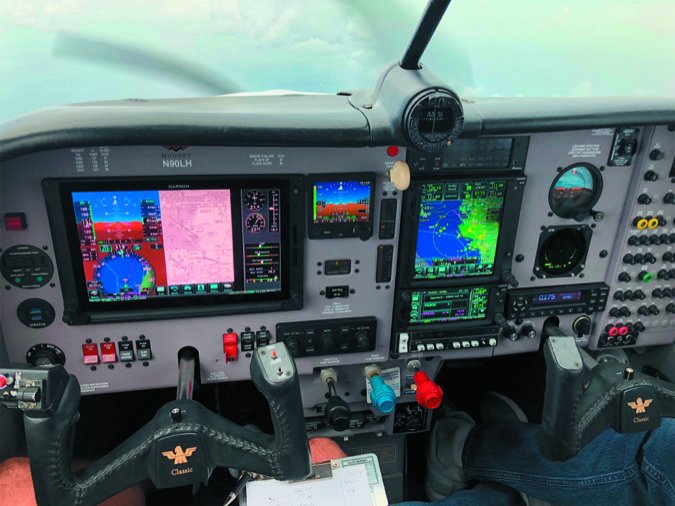
But TAS isn’t always the hands-down winner. Since TIS-B is not limited to transmitter power from the ownship, its range can be up to 48 miles, versus the range of the lower-power TAS at 12 miles. For the Mooney, this is a toss-up since any traffic more than 12 miles away really is not an issue.
It’s tough to argue that TAS comes out ahead when it’s important to paint nearby airplanes prior to (or right after) takeoff. This is especially relevant in high-traffic areas and makes for a sound argument for equipping jets and speedy turboprops with TAS or TCAS as many are.
For others, ADS-B may come out ahead if the aircraft has ADS-B Out because that triggers a traffic uplink from ADS-R stations, plus you can see what ATC does. In my Mooney, I’m convinced that I’m getting the best of both worlds.
–Luca Bencini-Tibo
ADS-B versus TAS/TCAS II
If you’re ready for a migraine, let’s talk a bit about the real ADS-B In picture. For starters, ADS-B traffic is in the same octave as the 2020 mandated ADS-B Out, but related only by frequencies. No, you still don’t need ADS-B In to satisfy the upcoming mandate. But the FAA encourages it and it’s your ticket to a pretty decent traffic picture-if you understand and accept the limitations.
Get your T and F nomenclature in order. ADS-B In provides two subscription-free services: TIS-B (Traffic Information System-Broadcast) and FIS-B (Flight Information System-Broadcast). For our purposes here we’re concerned with TIS-B because that’s the traffic feed. Need a brief refresher on the weather data feed?
FIS-B weather information is transmitted continuously from ground stations (no, not satellite broadcast-that’s subscription-based SiriusXM) around the country on 978 MHz UAT systems. You’ll receive this data with portable UAT ADS-B receivers and some mandate-compliant ADS-B Out systems that also have ADS-B In receivers. Again, go to the buyer’s guide in our December 2018 issue for a multi-page rundown of seemingly endless solutions.
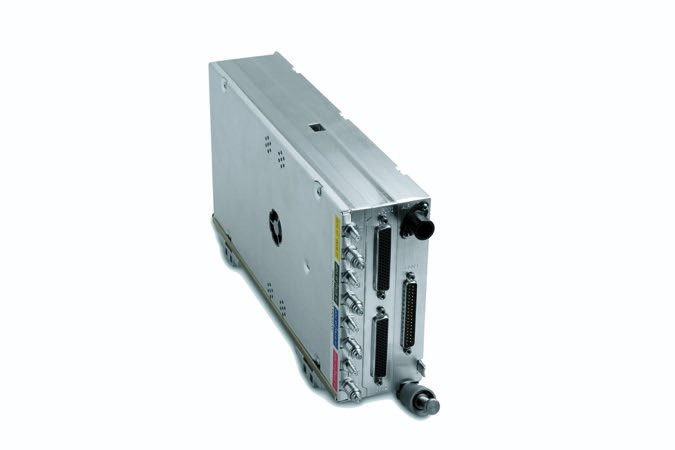
Back to traffic matters, we think the ADS-B network has matured enough (that is, with more equipped aircraft) to the point that an ADS-B traffic systems is the worthy alternative to active TAS when you consider equipment costs and installation complexity. See the sidebar on page 7 for a summary. Still, as sold as we are on NextGen traffic data we’d still go with TAS or TCAS II for some if not all high- and fast-flying turboprops and jets. Add 1090ES ADS-B out to the mix and those aircraft are as well-equipped as it gets right now.
But if you’re using ADS-B traffic, do you really know where all of the data is coming from? It’s important to understand that TIS-B refers specifically to traffic information that is transmitted from an ADS-B ground station, or ADS-R (the R being a traffic data repeater from the ground station).
Core to the ADS-B concept, ATC collects data on aircraft position and altitude information through secondary radar (i.e., transponders) of Mode A/C and S-equipped aircraft (Mode A equipped aircraft will not provide altitude information), and also from ADS-B Out equipped aircraft. There’s little latency because the positioning of ADS-B Out equipped aircraft is provided every second through LAT/LON positions derived from the ADS-B system’s WAAS GPS. Another important point here is that TIS-B will only display transponder-equipped aircraft, and the same can be said for TAS and TCAS.
TIS-B takes the above-mentioned information, converts it to a compatible format for ADS-B and transmits it through the ADS-R ground station using the ADS-B In datalink. We already mentioned one, the 978 MHz UAT. The other datalink uses the transponder frequency of 1090 MHz.
There are many options for airborne equipment for TIS-B. Portable solutions include a portable receiver, preferably a dual-channel unit that receives both 978 and 1090 MHz frequencies (as most current ones are) and a tablet with compatible app. We covered the latest portable receivers, plus we published a buyer’s guide, in the December 2018 Aviation Consumer.
Panel-mounted receivers include UAT, which would also provide ADS-B Out through its transmitter, ergo the T in UAT: Transceiver. There are two options for screens: a panel-mounted screen or if the UAT unit has Bluetooth or Wi-Fi capability, it could interface with a tablet.
Mounting It
Now that you’ve got all that tech straight, decide how you’ll display the traffic data. There are too many possibilities for us to list, so it’s best to ask your shop what’s the most practical in your installation based on software compatibility and the wiring. And if a tablet computer is your only option, realistically think about how you’ll mount it, if you’ll mount it at all. Thanks to Bluetooth, the possibilities are almost endless. But, we’ve seen some pretty illogical and frankly unsafe configurations, especially with tablets mounted in the worst possible locations. We know of one particular Mooney equipped with traditional flight instruments, vintage King Silver Crown avionics and a first-gen IFR GPS. None of this can display traffic data, but the iPad will, of course.
This Mooney’s owner had two of them, actually. One was yoke-mounted (blocking the view of the flight instruments) for charts and another was attached to the Mooney’s glareshield with an ingenious home-fabricated canted mount. This was the traffic (and weather) display, fed by a portable ADS-B receivers. Good plan, but the deal-breaker was the full-sized iPad blocked an awful lot of the windscreen. Having been in a crash and knowing how violent it can get inside the cabin during the drama, we don’t like any hardware attached to and extending from the glareshield. Whatever is mounted there is usually in the flail zone.
Decision Time
For us, choosing one traffic technology over another really comes down to the kind of aircraft you fly and perhaps where you fly. We wouldn’t yank a working TAS system from the aircraft during an ADS-B upgrade because as we describe in the sidebar on page 7, having both offers sizable belt-and-suspender utility.
But for new installs, unless you’re moving along at turboprop or jet speeds, ADS-B wins for price. There are some limitations, including the potential of not seeing traffic targets while on the ground.
But the latest high-end TAS processors have limits, too. For Avidyne and Garmin TAS/ADS-B interfaces, realize they’ll provide ADS-B In only (not Out) and won’t do anything for satisfying the mandate. When interfacing them on legacy displays, they may not display the ADS-B targets in true ADS-B symbology, instead appearing as plain-vanilla traffic tags. That limitation, according to Avidyne, has more to do with retaining compatibility with older displays than it does the technology in general. We’ll dive deeper into these systems in a future issue.

